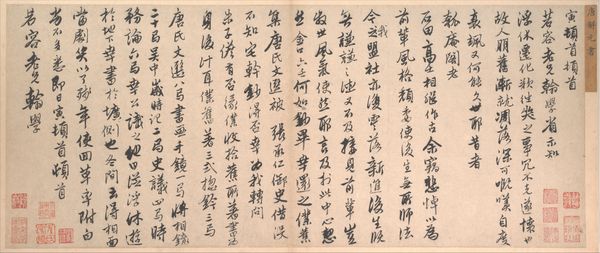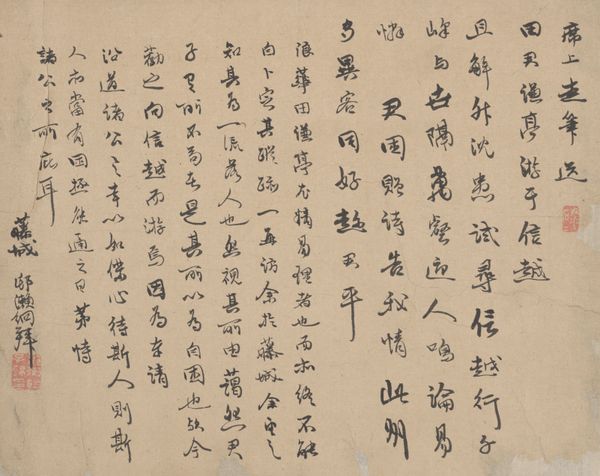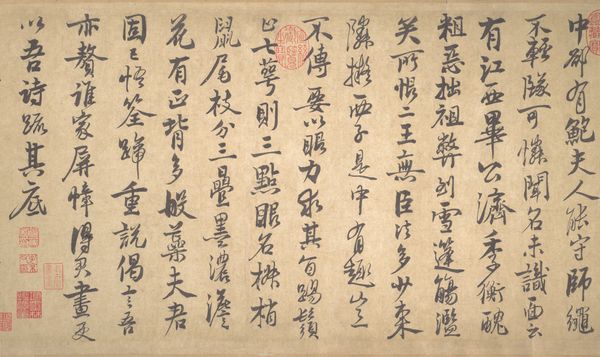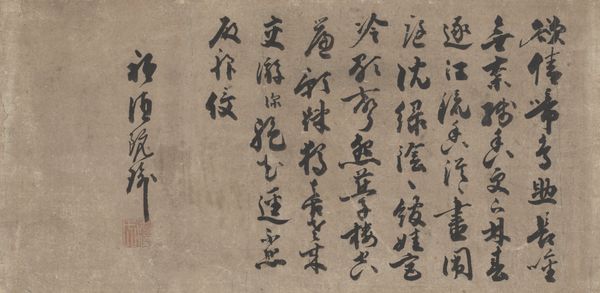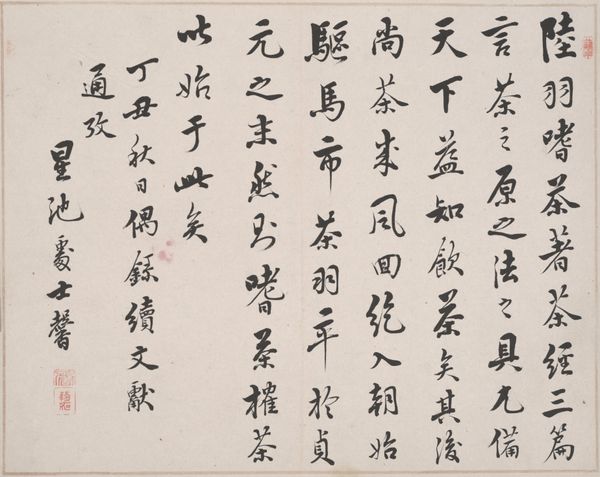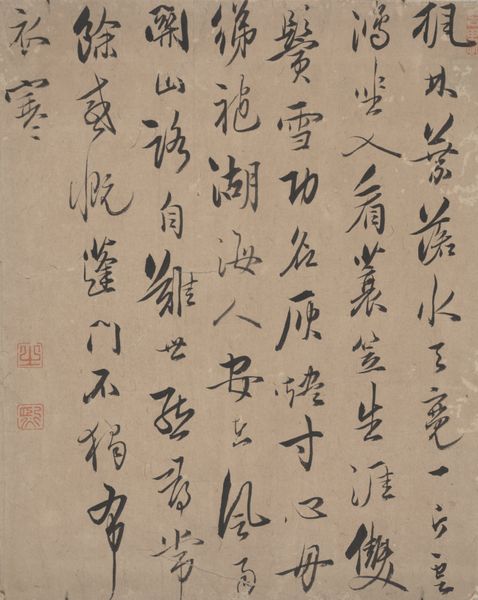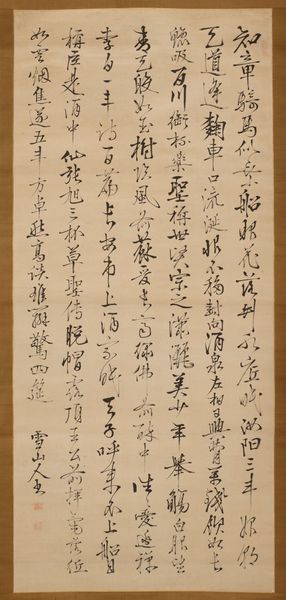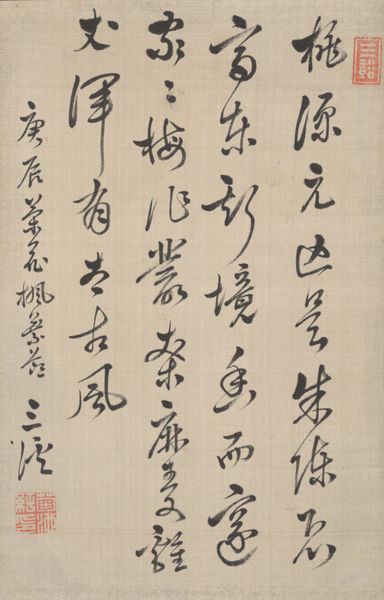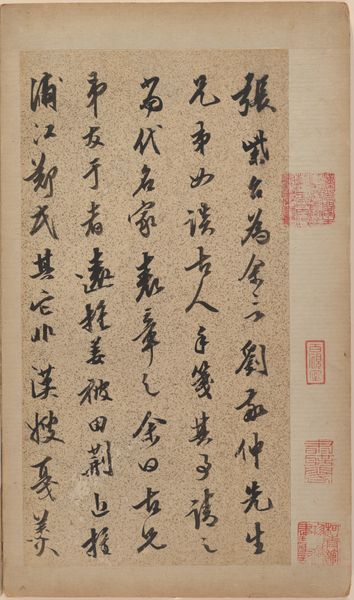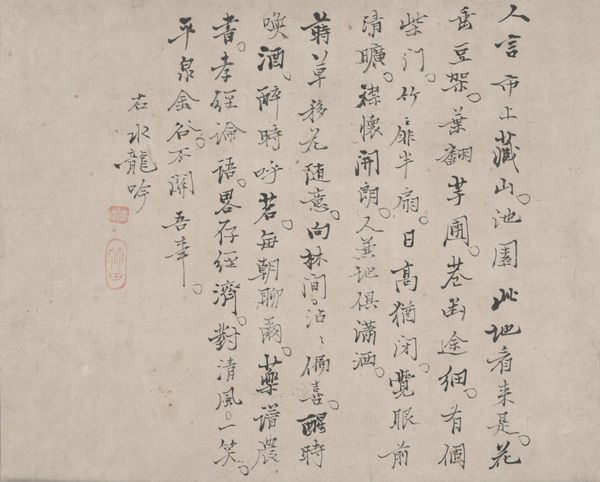
drawing, paper, ink
#
drawing
#
asian-art
#
paper
#
ink
#
calligraphy
Dimensions: 15 × 33 1/8 in. (38.1 × 84.14 cm) (image)20 × 51 3/8 × 1 in. (50.8 × 130.49 × 2.54 cm) (outer frame)
Copyright: Public Domain
Curator: My initial reaction to Zhang Zihou’s "Western Inscription," dating back to 1836, is drawn to the elegance and discipline apparent in its structure. Editor: I'm immediately drawn to the sheer labor involved in creating this artwork. Think of the craftsman, meticulously preparing the ink and paper, reflecting deeply on the characters' meanings with each stroke of their brush. Curator: Let's begin by describing the visual architecture. We have row upon row of perfectly rendered calligraphy, an embodiment of classical aesthetics, executed in ink on paper. Each character a study in balanced forms. Note how the artist achieved this by deploying similar techniques on the rows such as in shape, balance, and tonal unity across the artwork, an appeal to formalism. Editor: For me, this isn't just an aesthetic exercise. It's deeply rooted in social practice and intellectual discipline. Calligraphy wasn’t just about skillful manipulation of materials; it reflected social status, literati identity, and imperial service. The work serves as a tool for conveying knowledge, expressing ethical considerations, and marking significant temporal markers. It served multiple purposes for artist and recipient. Curator: You are right; beyond the pure aesthetics, there's also a powerful expression. It’s hard to grasp without being fluent in Chinese. Editor: Exactly! These aren't mere decorative forms, but rather textual signs imbued with meaning, pointing to history and human relations, especially ancestor and sibling respect, a deep connection with human harmony. Consider how readily accessible and shareable this medium could be. Its consumption underscores an interest in accessibility over aestheticization alone. Curator: In this vein, calligraphy offers visual interest alongside philosophical depth and reveals artistic commitment, a form so meticulously planned in material execution, formal display, and the transfer of its intellectual substance to generations of viewers to follow. Editor: I agree; appreciating the material and cultural context offers deeper perspectives on pieces like "Western Inscription," revealing artistry inseparable from history and labor.
Comments
minneapolisinstituteofart almost 2 years ago
⋮
This is a rendering of a controversial text by the Chinese philosopher Zhang Zai (Zihou; 1020–1077) in which he envisions an all-encompassing, hierarchical order that links all individuals to the whole universe in a parent/child-like relationship. Ichikawa Beian executed it in a very clean and balanced style. 張子厚西銘 乾稱父坤稱母予茲藐焉乃混然中處故天地之塞,吾其體天地之帥吾其性民吾同胞吾與也大君者吾父母宗子其大臣宗子之家相也尊高年所以長其長慈孤弱,所以幼其幼聖其合德賢其秀也凡天下疲癃殘疾惸獨鰥寡皆吾兄弟之顛連而無告者也於時保之子之翼也樂且不憂純乎孝者也違曰悖德害仁曰賊濟惡者不才其踐形惟肖者也知化則善述其事窮神則善繼其志不愧屋漏為無忝存心養性為匪懈惡旨酒崇伯子之顧養育英才潁封人之錫類不弛勞而厎豫舜其功也無所逃而待烹申生其恭也體其受而歸全者參乎勇於從而順令者伯奇也富貴福澤將厚吾之生也貧賤憂慼庸玉汝於成也存吾順事沒吾寧也
Join the conversation
Join millions of artists and users on Artera today and experience the ultimate creative platform.

